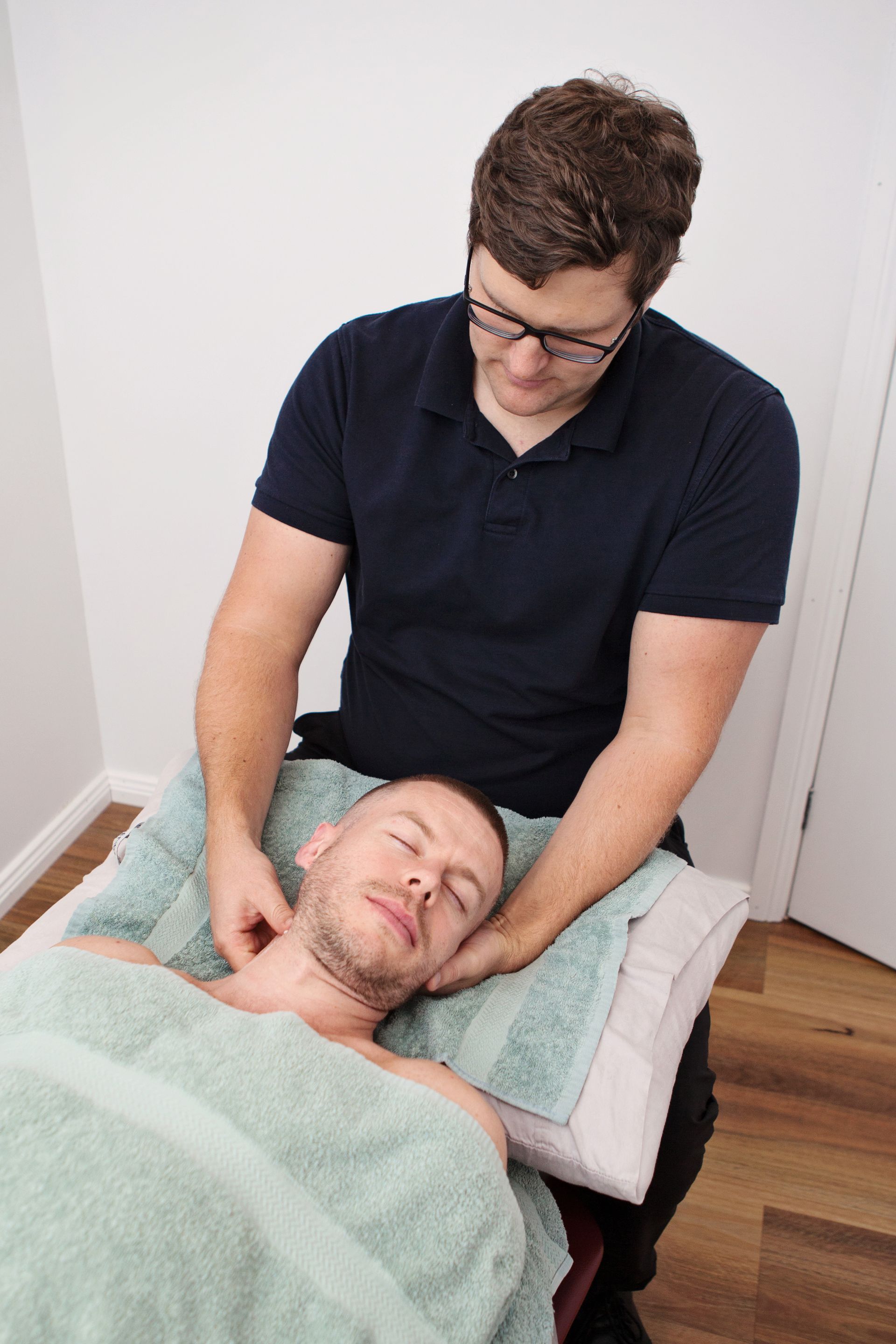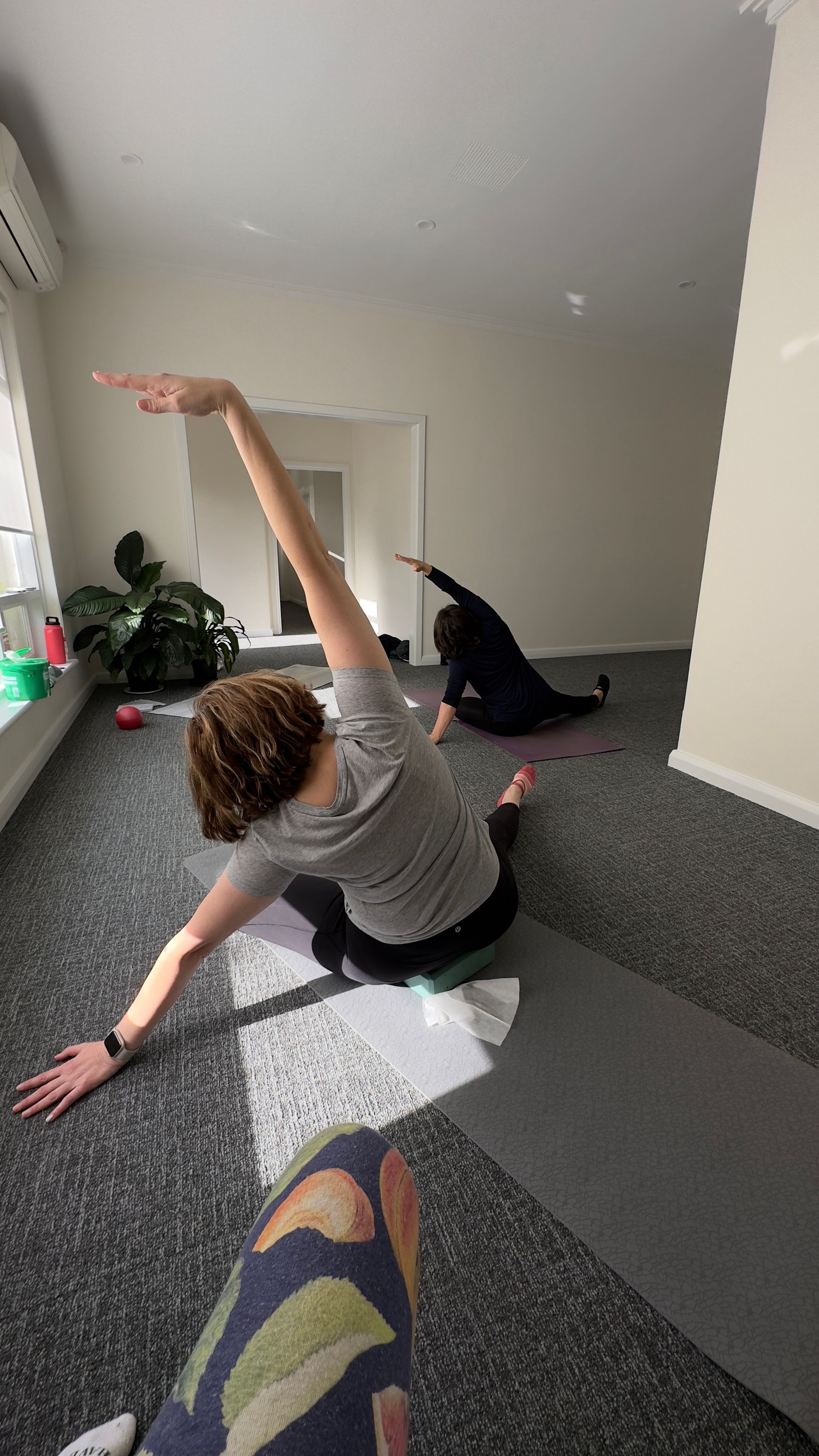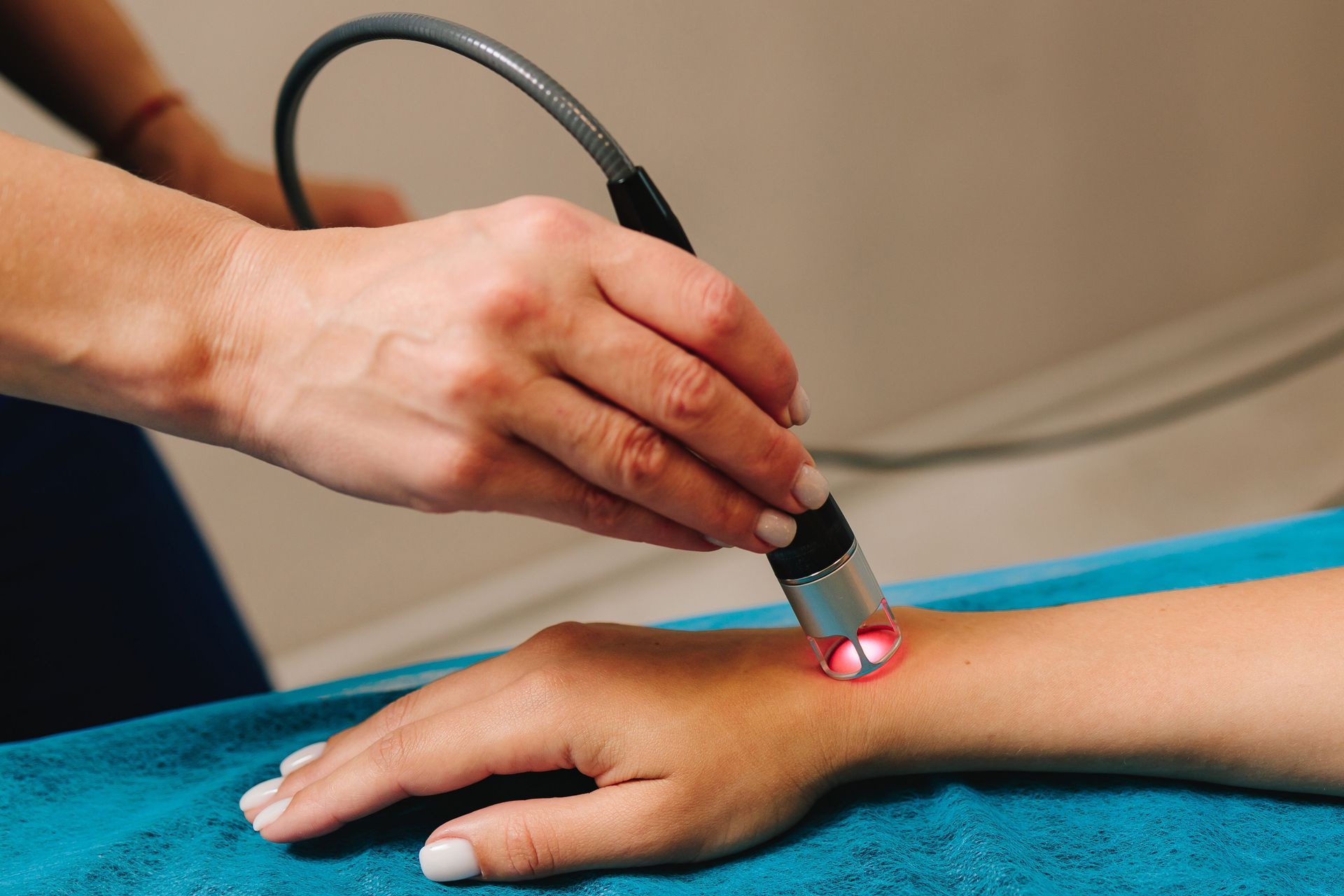Chiro Myth Busting: Is The Cracking Sound Bad?
Chiropractic On Winston Explains About That Cracking Sound You Experience During Chiropractic Treatment In Adelaide

The notion that the audible "pop" or "crack" heard during a chiropractic adjustment is inherently harmful is a common misconception.
This sound, known as cavitation, is simply the release of gases, primarily nitrogen, from the synovial fluid within a joint capsule.
Think of it like opening a can of soda – the release of pressure causes a characteristic sound, but the sound itself is not indicative of damage.
While the cracking sound is a frequent occurrence during chiropractic manipulations, it is crucial to understand that the sound itself holds no intrinsic therapeutic value and is certainly not a prerequisite for a successful adjustment.
The focus of chiropractic care lies in the skilled assessment and precise application of force to specific joints exhibiting restricted movement or dysfunction.
These restrictions can lead to pain, muscle tension, and impaired nerve function.
Our Chiropractors undergo extensive education and training to identify these problematic areas and apply gentle, controlled forces to restore proper joint mechanics and improve overall musculoskeletal health.
The crucial distinction lies between professional chiropractic adjustments and generalised self-manipulation.
Our Chiropractors possess a deep understanding of spinal biomechanics, anatomy, and neurology.
Our assessments involve a thorough evaluation of your medical history, posture, range of motion, and palpation of the spine and surrounding tissues.
This comprehensive evaluation allows us to pinpoint the specific joints requiring attention and tailor the adjustment techniques accordingly.
Conversely, attempting to self-manipulate the spine or other joints carries risks.
Without the necessary anatomical knowledge and diagnostic skills, you may apply excessive or inappropriate forces to joints that are not the primary source of their discomfort.
This can lead to muscle strains, ligament sprains, nerve irritation, and in rare cases, more serious injuries.
The seemingly satisfying "crack" achieved through self-manipulation may not address the underlying issue and could potentially destabilise other areas of the spine.
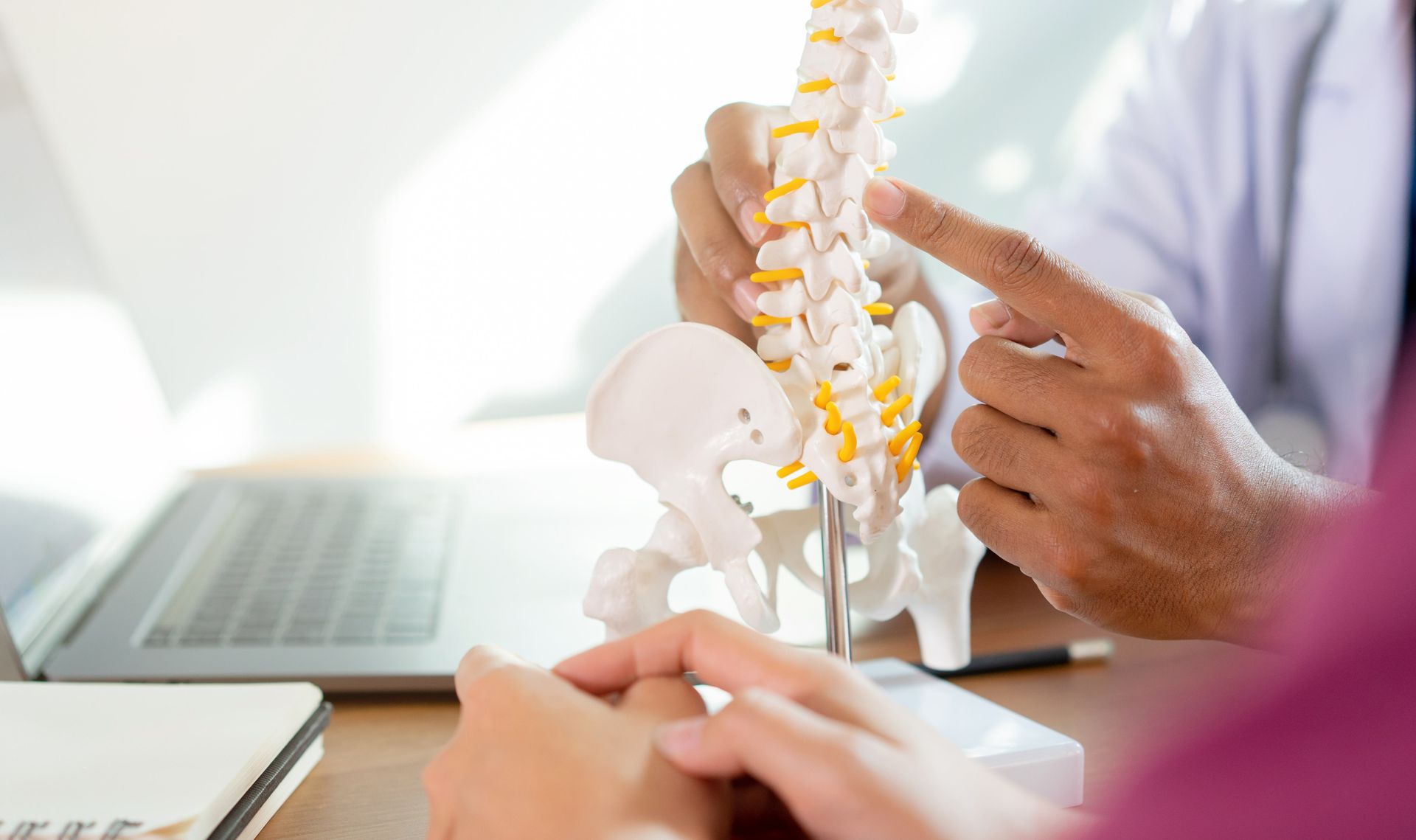
Furthermore, the effectiveness of chiropractic care is not determined by the presence or absence of the cracking sound.
Many effective chiropractic techniques do not produce an audible cavitation.
Our chiropractors utilise a diverse range of gentle mobilisation techniques, muscle energy techniques, and instrument-assisted adjustments to achieve therapeutic outcomes.
The true indicators of a successful chiropractic adjustment are improved range of motion, reduced pain, and muscle tension, and enhanced neurological function.
In conclusion, while the cracking sound associated with some chiropractic adjustments is a common and generally harmless phenomenon resulting from gas release within the joint, it is not inherently bad and should not be the sole focus of concern.
The safety and efficacy of chiropractic care are firmly rooted in the expertise of the chiropractor.
Their specialised knowledge and skills enable them to perform safe, specific adjustments tailored to individual needs, maximising the potential for positive outcomes and minimising the risks associated with untrained self-manipulation. Therefore, instead of focusing on the sound, individuals should prioritise seeking care from our qualified and licensed chiropractors to address their musculoskeletal concerns safely and effectively.
Below is a simple table comparing Self-manipulation to chiropractic adjustments.
Difference Between Self-Manipulation and Professional Chiropractic Adjustments
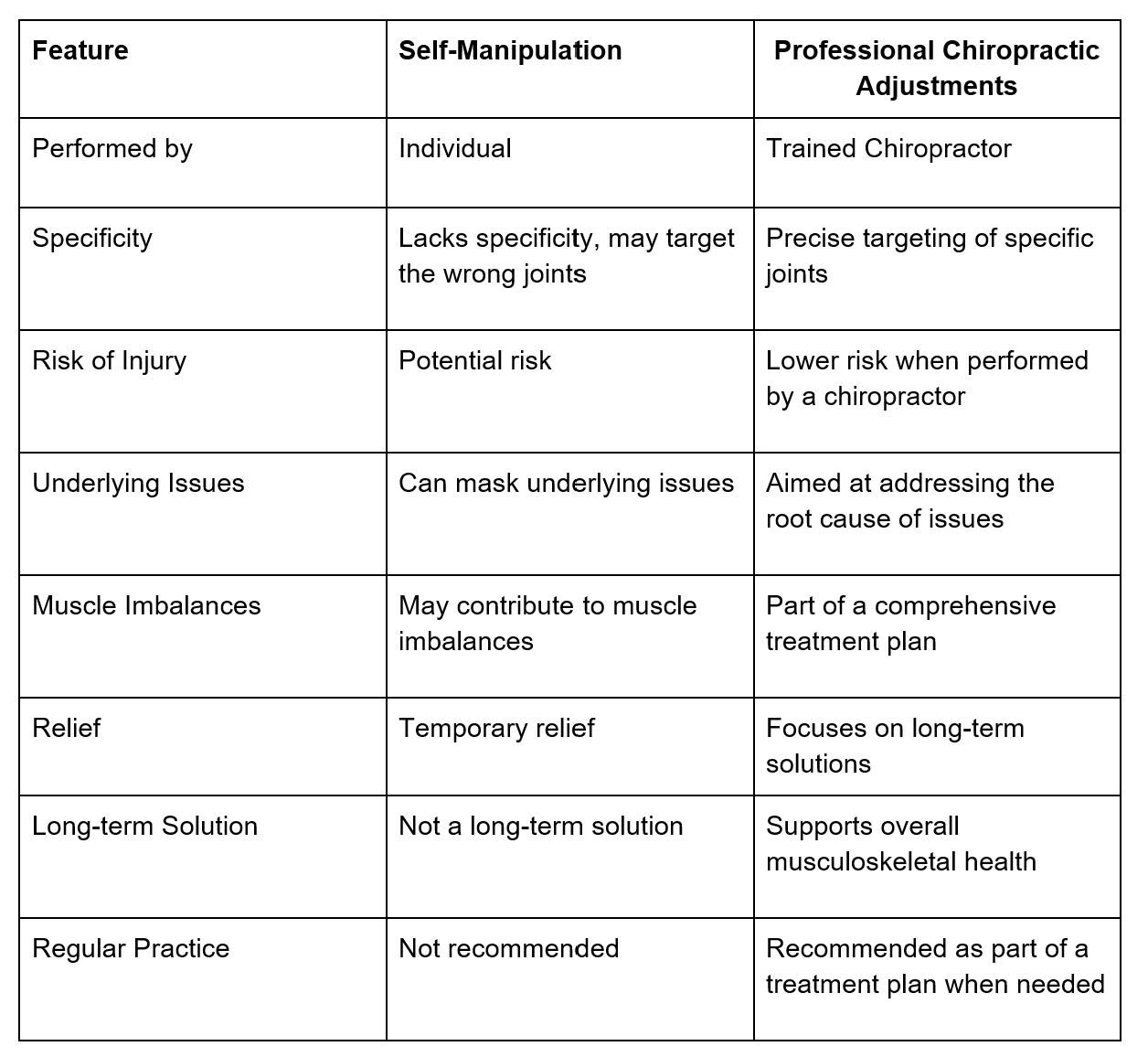
Visit Us To Learn More & How Our Talented and Highly Trained Chiropractors Can Help You Get The Most Out Of Life!


